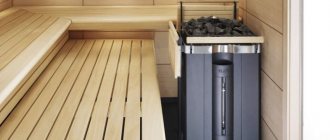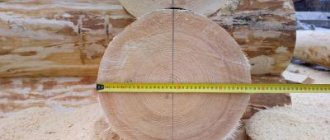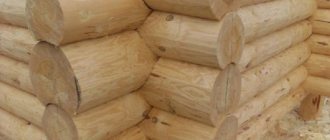Bathhouse - this magical word evokes only positive emotions in most people: wooden benches with a special aroma inherent only to steamed wood. And what is it worth to stay in the steam room! These feelings cannot be forgotten. And pouring cold water, the aroma of an oak broom, a copper ladle and hot steam... Many residents of Russia are accustomed to visiting a traditional Russian bathhouse and call all types of bathhouses by this name. But each such institution has its own differences. Let's look at each one separately.
Description of the bath
According to old customs, the room consisted of two steam rooms, combined with a washroom and a dressing room, which was also a dressing room.
- Nowadays, a bathhouse can already be called a sauna. After all, it is divided into a steam room and a separate room for washing.
- The general name of a bathhouse implies one room with a boiler of water and a stove with stones.
- And washing the body takes a few minutes, like taking a shower, dousing from a tub or plunging into a vat of cold water.
All this introduced new standards in the distribution and number of rooms in a modern bathhouse. Clearly stated restrictions and rules for determining the optimal size of the bath. There are logical conclusions on the basis of which plans and calculations are made before construction begins.
Finnish dry sauna
A modern sauna is practically no different from a Russian steam room. The difference is that the steam room in the sauna is smaller, since the stoves used in the sauna are less powerful than the stoves for the Russian bath. To build a sauna you do not need a lot of building materials. If we talk about a classic sauna, you will need wood (aspen, linden or northern spruce), clay, brick, and stones for the stove.
When replacing the stove with an electric fireplace, only wood will remain what is needed. In modern construction, synthetic material is often used for thermal insulation, but the classics do not tolerate synthetics, only natural materials. A comfortable sauna consists of at least 7-8 rooms: a hall, a steam room, a dressing room, a bathroom, a locker room, a shower room and a swimming pool. The main difference between a sauna and other types of steam rooms is intense heat with a temperature of 110-120 degrees and a humidity of 5-15%.
Types of baths
Based on the time of use, baths are divided into seasonal and permanent. In seasonal or summer cottages, they steam in the summer, coinciding with the gardening period. Permanent or year-round are used regularly at any time of the year.
Seasonal buildings usually do not need to be built large. They are needed for 4-5 months. In some cases, if there is a large family or regular guests who are ready to use the steam room, a larger bathhouse may be needed.
The average size of country baths depends on the size of the land plot and usually does not exceed 3x3 meters.
A year-round sauna is built thoroughly, often with all the amenities: running water, sewerage, relaxation rooms, a terrace. Not only do they steam and wash there, but large groups also relax there.
Women's and men's
Until the reign of Catherine the Great, the steam rooms were shared by both women and men. In such establishments one could not only wash oneself, but also communicate with other people and hear the latest news. In a large room there could be members of several families with children of different ages, and such behavior was considered the norm.
In what year did bathhouses, separated by gender, appear in Rus'? In 1743, a Senate decree divided the bathhouse into two parts: men's and women's. From that moment on, individuals of the other sex under the age of seven were allowed on the territory of the men's bathhouse, and the same was true for the female half.
Number of rooms in the bathhouse
The total number of rooms in the building depends on the following factors.
- How much space is allocated for the bathhouse?
- How many people will use the steam room?
- How much does the owner want to invest in the business?
The most basic budget building contains two rooms, a steam room, which is the base, and a dressing room. However, if desired and financially possible, a real modern bathhouse consists of a steam room, a dressing room, a shower or washing room, a relaxation room,
If two or three people prefer to regularly take a bath procedure, paying attention only to the bath process, then two rooms are enough: a steam room and a changing room.
Construction budget restrictions also play a role. However, if there is enough space for construction and enough money, then you can build as many rooms as your heart desires.
If there are more than three people in a family, and the owners are used to receiving guests, then there is no need to limit yourself to two rooms in the bathhouse. Complete rest is possible if you have free space. In this case, in addition to the steam room and dressing room, a full-fledged sauna with a relaxation room, shower, toilet, swimming pool, terrace or open veranda is built.
Basic attributes of a Russian bath
A traditional Russian bathhouse is not complete without a broom. It can be made of oak, birch, willow, maple or any other tree or plant. Each broom has its own advantages.
A full-fledged bathing procedure is also impossible without high-quality stones that are placed in the steam room. They are heated by the stove and when water enters they create thick, dense steam. It is recommended to choose stones responsibly in order to benefit from the steam room. The most common are jadeite, dunite, porphyrite.
Attributes of a Russian bath
Read the blog for even more detailed and interesting information about baths and bath procedures.
Steam room area
The size of the room where the main process takes place depends on several reasons.
- Steam room heating options. If the stove is brick, then we start from its size. If it's electric, it won't take up much space.
- The number of people who will steam at the same time.
- The height of the tallest family member.
The minimum size of the steam room is 2 sq.m. It’s convenient to steam there for one person, or less often for two. An area of 3 square meters or 1.5x2 meters around the perimeter is suitable for three or four people.
If the size of the plot and the family budget allow, then the size of the steam rooms in the bathhouse is determined based on the power and speed of heating the room. the long wall for the shelves should be less than 2 m, the short one at least 1.5 m.
The height of the ceiling in the steam room affects the speed at which the air in it warms up to the desired temperature. As a standard, ceilings should not be lower than 210cm. then, when swinging a broom, nothing will interfere with this bath procedure. If there are tall people in the family, then the ceilings are made 230 cm. The maximum ceiling height in the steam room reaches 250cm.
The size of the shelf depends on how the owners are used to steaming. If you are sitting, then there is no need to make them long. A length of 150cm and a width of 45cm will be sufficient. In a lying position, you will need a shelf from 1.6 to 2 meters in length and a width of 65 cm.
The windows in the steam room are located at a height of 120 cm from the floor. Window size 35 x 35 cm.
Which bathhouse to choose for construction?
Modern technologies do not stand still. The appearance of the bathhouse also changes and takes on unconventional forms. The desire of customers to use natural wood for its construction remains unchanged, as it is beautiful, natural, environmentally friendly and inexpensive compared to stone.
According to the construction technology, baths are divided into several categories:
- baths made of rounded logs;
- baths made of laminated veneer lumber;
- baths made of profiled timber;
- frame baths;
- mobile baths (barrels, cabins, trailers)
Despite the commonality of the listed building materials, the construction of baths using these technologies has fundamental differences.
a) Saunas made of rounded logs
A spectacular, maximally environmentally friendly structure made from solid logs has been used for the construction of bathhouses for centuries. People with conservative preferences usually do not think for a long time about which bathhouse to choose for construction.
They focus their attention on the log house for a number of reasons:
- aesthetics by maintaining the external round shape of the tree;
- pleasant aroma of wood;
- good thermal insulation;
- excellent air exchange of the log provides natural ventilation;
- durability of the building with proper protection of the wood;
- environmentally friendly material.
b) Bathhouse made of glued and profiled timber. What are the differences?
What are the differences between bathhouses made of laminated veneer lumber and profiled timber? In order to understand this issue, we have prepared a table that compares laminated veneer lumber and profiled timber.
| Options | Glued laminated timber | Profiled timber |
| Raw materials | Solid wood boards glued under pressure | Solid wood |
| Dimensions | 120x185 mm (can be replaced with 160x185 mm or 200x185 mm) | Section 150x150 mm / 150x200 mm / 200x200 mm |
| Environmental friendliness | Depends on the quality of the glue | Completely environmentally friendly |
| Air circulation | Violated | Natural |
| Shrinkage | 1-2% | up to 8% |
| Humidity | from 10 to 14% | from 14 to 16% |
| Deformation | Depends on the quality of gluing | No more than 1 mm |
| Finishing | Possible immediately after construction | After 6-12 months |
| Price | More expensive than profiled | 25-30% cheaper than a sauna made of laminated veneer lumber |
Don't rely on this table alone. It gives a general idea and compares only 2 types of building materials. To select a construction technology, specialist consultation is required.
c) Frame baths
A frame bath is a specific design that requires due attention and proper insulation. This construction technology has both strengths and weaknesses.
Advantages of building a frame bath:
- due to the lightness of the structure, it is possible to save on the foundation (the load is 5-6 times less than, for example, a bathhouse made of a solid log);
- the price of the frame is lower;
- heats up quickly;
- there is the possibility of construction at sub-zero temperatures outside;
- if you do not violate the insulation and ventilation technology, you can achieve an ideal microclimate;
- can be used immediately after construction.
Disadvantages of a frame bath:
- expensive finishing and the impossibility of using cheap insulation materials;
- the insulation must be closed during construction, since if it gets wet, you will have to buy a new one;
- increased requirements for ventilation, since there is no natural air circulation;
- the structure is weak against strong wind and snow loads;
Frame baths are not the most popular option for construction, but sometimes they are the only right solution when you are limited in finances or cannot use a massive foundation
d) Mobile baths
Speaking in the language of a builder, a mobile bathhouse is a non-permanent structure that does not require a foundation. And installation permits, as when creating a full-fledged bathhouse.
So, for example, it has an assortment of barrel saunas, cabin saunas, trailer saunas or transportable saunas that you can take with you on a trip. Such structures are assembled at the factory and delivered to the buyer’s site in finished form.
The bathhouse is installed on a flat, dry base made of crushed stone, tiles or screw piles. It is important that the structure does not come into contact with the ground.
Advantages of a mobile sauna:
- unusual attractive appearance;
- the ability to move the bathhouse to another location when redeveloping the site or moving;
- environmentally friendly material - cedar, which releases healthy essential oils;
- fast delivery and installation;
- low cost of construction;
- no need to register it as a permanent structure.
Every year, mobile saunas are becoming more popular, especially for small summer cottages.
Waiting room
The dressing room is made with a minimum area of 1.3 sq.m. This size is enough to take off clothes and hang them on hangers.
In a large bathhouse, space for a dressing room can be separated by calculating the number of people who will be there at the same time. Typically the area is from 6 sq.m.
In front of the dressing room, you can make an additional corridor that traps cold air in winter.
Oriental bath - Turkish hammam
The Turkish bath that has survived to this day is a direct descendant of the Roman one. In baths of this type, the room is heated by warm air, which circulates through pipes under the floor of the steam room, and heating also occurs using a large boiler built into the wall. The boiler plays the role of a steam generator.
Turkish baths were built according to the palm type - a dressing room and five niches. In each niche the temperature gradually increased. In the last one it was about 100 degrees. The difference between Finnish and Slavic baths and Turkish baths is that in Slavic and Finnish baths granite and marble are not used in construction, and in Turkish baths, on the contrary, wood is not used. The main advantage of a Turkish bath is a warm floor. In modern Turkish baths, the floor temperature is adjustable.
Sink or shower
After the steam room you usually want to freshen up. It’s good if there is a vat of cool water next to the bathhouse. Previously, natural reservoirs were used for this.
Now you can make a separate section in the bathhouse for taking a shower. Or pouring water from a bucket.
- The size of the shower according to the standards is 1x1m or 1.3x1.3m.
- This size is enough to take a shower.
- If desired, the shower room can be enlarged.
Luxury or necessity
In Rus' there were steam rooms in almost every yard, if its size allowed. Once a week, most often on Saturday, the home baths were heated and washed by the whole family. Those who did not have a large courtyard and soap shop had the opportunity to visit the common steam rooms.
Such establishments operated for a small fee, and anyone could take a steam bath. Even during the reign of Vladimir Krasno Solnyshko, baths were used to treat various ailments. And a century later, the famous monk-healer Agapius healed the sick only with a bath and medicinal herbs. Following the rules of the holy place, all those who suffered visited the baths three times a month.
Restroom
In each bathhouse, the dimensions of the relaxation room are individual and are calculated depending on the owner’s requests. One is large enough to accommodate a table and bench. Others prefer to install there, in addition to the dining group, a billiard table, a sofa, and a TV.
Everyone's vacation habits and wallets are different. Therefore, there are no standards for the size of the rest room.
Important. All doors in the bathhouse open outward according to fire safety standards.
In addition to the main premises, there are options for a bathhouse with a swimming pool, a terrace, and two-story buildings.
Types of baths and their features
The word bathhouse evokes only good emotions in almost all people. In the bathhouse there are benches made of wood, which have a special aroma that nothing in the world can replace - the aroma of wood that has steamed from the heat. And the very feeling of being in a steam room cannot be replaced by anything, just like cold water, an oak broom and hot steam.
Most of the Russian population are accustomed to going to a Russian bathhouse, and this word refers to absolutely all types of bathhouses, of which there are quite a few. Despite this fact, each such place has its own names and differences.
Types of baths. Absolutely every type of bathhouse has differences in shape and size, in such indicators as temperature and, of course, humidity, both indoors and in the steam room. Places of this type are divided into several groups:
- With a supply of purely dry air. In such a place the temperature is 60-120 degrees, but the humidity in the steam room is not higher than 25;
- There are “damp” rooms. In this case, the temperature reaches from 50 to 700 degrees. Humidity is also at a fairly high level, around 70-100%.
Some of the famous ones, of course, are the Finnish and Russian baths. Steam in the provided premises is obtained only from coals, which in turn are very hot. There are different types of baths that the peoples of the world are accustomed to using; below are the most common:
- Russian bath;
- Finnish;
- Roman;
- Turkish;
- Japanese;
- Irish.
Below we will examine each of them in more detail.
Standard sizes
A bathhouse is often built from timber or logs. Wooden construction is limited by the standard length of wooden blanks. Common general dimensions of a seasonal bath are 2x3m, 3x3, 3x4 meters. Large year-round structures will have a log frame of 4x6, or 6x6 meters.
The bathhouse remains one of the favorite types of recreation in Russia. Not only do you steam and wash there, but you also meet with friends and relatives. Correctly chosen dimensions for a bathhouse will help improve your relaxation after working days and make it more comfortable.
From nomadic tribes to the princes of Kyiv
Even delving into the study of historical chronicles, it is impossible to say exactly when the first bathhouse appeared in Rus'. After all, even the nomadic tribes of the Scythians used special tents made of wooden poles, covered with animal skins and with a fireplace in the middle, for ritual cleansing, and simply for washing during campaigns.
Before cleansing, stones were heated white-hot on a fire, which were then doused with water or herbal decoctions. And Scythian women ground cypress and cedar branches with water on heated stones. The resulting paste was applied to the skin and kept on throughout the day. Wash off this mask with warm water the next day. This procedure not only helped cleanse the skin of dirt and inflammatory diseases, but also gave it an incredibly fresh aroma.
Photo of a bathhouse with optimal sizes
“Ours” abroad
When baths appeared in Rus' is more or less clear. But over time, Russian steam rooms became fashionable in other countries. It all started with Peter the Great's trip to France. The guards accompanying the tsar began to lose their health due to prolonged “doing nothing.” To prevent servicemen from losing their shape, Peter ordered the construction of a real Russian steam room on the banks of the Seine.
The Europeans were horrified when they saw men flushed from steam on the river bank, throwing themselves into the cold water. To which the great king spoke about the health benefits of such procedures.
The emigration of Russians during the revolution also yielded results: America, England and Africa learned about the existence of such healthy procedures.
Rome
Whether it was a bathhouse or a city, the ancient Romans built up their baths as a feast for the eyes, with ideas like gilding and painting. The largest are the Baths of Caracalla, with more than two thousand naked bodies at one time. There was also a gymnasium, a library and a cafeteria. Roman baths are generally an analogue of today's fitness clubs. There the Romans pumped their muscles with weights and played ball. The main thing is to assign a slave to the abandoned clothes, otherwise the bathhouse thieves will take everything down to the last sandal. The baths were heated with hot water pipes: they were laid under the floor and behind the walls.
Today, the washing palaces are in ruins, and the Baths of Caracalla (or what remains of them) are under the protection of the Roman police.
Korea
This is what the cheerful Slavs are used to: from the steam room - straight into the ice hole. But Koreans take care of their spiritual strength. That’s why they started almost a dozen pools with different temperatures in their baths. You should take turns plunging from the hottest to the coldest and vice versa. There is also a special room where it is customary to catch aromas, that is, breathe in herbs and resins. Hot pebbles are laid out on the floor: you sprinkle some dry dust on them and inhale the healing aroma.
Koreans are shy people. That’s why the first public baths were opened only a hundred years ago. But now there are even bath tours to Seoul. Most often, tourists go to Chimchilban. The location near the food market does not bother anyone. Here you can spend the whole night and even sleep, saving on a hotel.
Fashionable place
Until the beginning of the 19th century, "trade" soaps were places for washing and collecting gossip. But after the construction of large stone buildings in the center of large cities - with separate rooms, cozy buffets - the baths became the main place where representatives of noble families preferred to gather.
Aristocrats gathered in a narrow circle to solve important problems, read literature and simply relax. Following the Russians, foreigners also began to visit such steam rooms.
The most famous “secular” baths can rightfully be called the Sandunovsky baths, which at one time attracted the entire flower of the aristocracy. And today this object is an architectural monument.
New World
Baba Yaga is not at all an insidious cannibal, as fairy tales teach. Calling Ivan Tsarevich into the oven, she was not going to bake pies with human flesh, but to properly wash the dirt. This is how they used to wash in Siberia: they raked out all the coals from the heater, put a basin with boiling water - and washed for health. From there, the custom of bathing in the hearth reached America. The Indians dug their baths right in the ground, and it was possible to climb into such a steam room only on all fours. Later they began to build a special wigwam on the edge of the settlement: in the middle there were hot coals, and around them red-cheeked Indians whipped each other with brooms made of corn stalks. This structure was called a “temazcal”: there was a window on the ceiling, the walls were low, you couldn’t even stand up to your full height. Therefore, the Indian bathhouse attendants were entirely hunchbacks and dwarfs.
The royal baths of the Mayan Indians can now be found in Mexico in the suburb of Cancun, the city of Chichen Itza. But you won’t be able to wash there: the city has been empty for five hundred years.
Hungary
The City of Baths is about Budapest. Right in the middle of the capital there are thermal springs, which would be a sin not to convert into baths. So the Hungarians chose not to sin: during the time of Turkish rule in the 17th century, they built the famous Cesar, Kiraly and Rudas. Glass roofs, intricate mosaics and wave pools In 1937, at the Bathing Congress, Budapest was named an international city of therapeutic water procedures. Today there are about 20 thermal baths in the capital.
In the bathhouse called Szechenyi you can accommodate a hundred people - and all of the royal family. Because in the middle of Budapest, in a city park, a natural palace was built for baths. Here is the hottest spring in Europe, 77 degrees Celsius. Enthusiasts wash directly in the open air.
Interesting fact: under Soviet rule, Magyar women could enter the bathhouse naked, wearing only an apron with a pocket for a key. Nowadays, even in single-sex establishments, people wash in special suits.
Finland
In the 50s of the last century, thrifty Germans discovered a bunch of spare parts from tanks and decided to solder electric heaters from them. This is how electric baths were invented. In order to quickly sell their goods, advertisers came up with a legend about Finnish saunas. Supposedly this is a civilized washing room without any harmful fumes for dirty brooms. Everything is dry, clean, sterile. Don't splash water in all directions - you'll get an electric shock. Inside there are decorous American soldiers in a row, not drunken bearded men under benches. But the sauna is the same Russian bathhouse, only in Finnish. Northern neighbors also revere birch branches, oak benches and a steamed glass.
The most famous sauna is the one that Finnish citizens built in the Olympic village of Berlin for the 1936 games. Alas, purgatory turned into hell under the bombs of World War II. And in Finland itself today there are more than 2 million saunas (for 5.3 million people).
Interesting fact: in neighboring Sweden, it is not the sale, but the purchase of “love” from available citizens that is considered a crime. But in Helsinki in the right saunas - please choose from. If you want, they will offer you a local beauty, but if you want, they will offer you a Russian or a cheaper Estonian.
Japan
Bathhouse in Japanese is called "ofuro". Instead of a traditional stove with coals and benches, there is a wooden barrel with hot sawdust. You sit in such a barrel almost up to your neck and imagine yourself as Diogenes. Instead of sawdust, you can sit in ordinary water, heated to 45 degrees. The main thing is to keep your head cold. And no soap - the fat of slaughtered animals is unsympathetic to Buddhists.
The public Japanese bathhouse is nicknamed “sento”: it’s a bit crowded for ten people in a barrel at once, so the Japanese sit side by side in the pool. And they don’t complain about the overcrowding: sento is rather a club where exhausted men in barrels decide the fate of their homeland.
Tokyo's onsen bathhouse (with water brought from hot springs) has dozens of baths and barrels. These kegs are not filled with rum or even beer, but with live Japanese gentlemen. Simpler people go to public baths, which are on every corner and are simply called “yu” - hot water.
Health and longevity
When baths appeared in Rus', our ancestors immediately noticed their healing properties. After warming up, the body easily tolerated various loads and recovered more easily from serious illnesses.
The Tatars, French and other peoples believed for a long time that thanks to this “wild” method of healing, Russian men had good health and incredible stamina, and women were famous for their beauty, youth and pleasant skin color.
Bath procedures have a beneficial effect on all organs and systems of the body:
- nervous system (calm and relax);
- cardiovascular (accelerate blood circulation, resulting in improved brain function);
- respiratory;
- endocrine.











